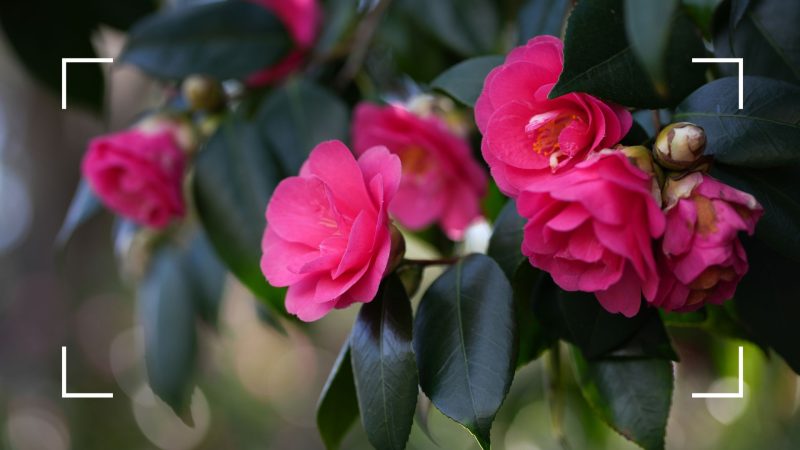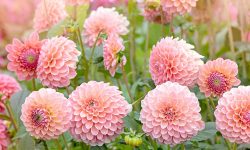Camellias, with their glossy leaves and graceful blooms, are among the most cherished flowering shrubs in home gardens. But to unlock their full potential, timing is everything—especially when it comes to pruning. Many gardeners miss out on the most spectacular displays simply because they prune too early or too late, unknowingly cutting away next season’s flower buds.
If you’re wondering when to prune camellias for the most vibrant blooms and lush growth, you’re in the right place. In this guide, we’ll dive deep into the best timing, techniques, and strategies to ensure your camellias thrive season after season. Whether you’re growing japonicas, sasanquas, or hybrids, mastering the art of pruning will bring beauty and structure to your landscape year-round.
Understanding Camellia Growth and Flowering Patterns

Seasonal Growth Cycles of Camellias
Camellias follow a rhythmic annual cycle of vegetative growth and flower development that directly informs when and how they should be pruned. After blooming, camellias enter a vigorous growth phase in spring and early summer. This is when the plant focuses on producing new shoots and leaves, which later mature into the flowering wood for the next season.
By late summer and into early fall, camellias shift their energy from foliage production to flower bud formation. These buds—called floral initials—develop quietly and mature through fall and early winter, eventually opening into full blooms depending on the variety. Pruning during or after this bud-setting period can severely reduce the number of flowers, since many of the developing buds may be inadvertently removed.
Types of Flowering: Japonica vs. Sasanqua vs. Hybrids
Different camellia types have varying flowering schedules, which influence pruning windows.
Camellia japonica, with its large, rose-like blooms, typically flowers from late winter to early spring. Its buds begin forming in late summer, making pruning after midsummer risky for flower loss.
Camellia sasanqua, often blooming in fall to early winter, sets buds earlier in summer and generally benefits from light shaping immediately after flowering ends in late fall.
Hybrid camellias may have broader blooming ranges but tend to follow one of these two patterns depending on their parentage. Understanding your specific variety’s schedule is key to effective pruning.
How Growth Affects Flower Production
Camellias bloom on old wood, meaning flower buds are formed on the previous season’s mature growth. This distinguishes them from plants that flower on new wood, like hydrangea paniculata. Because of this, pruning camellias too late in the growing season can eliminate many of the flower buds before they even have a chance to bloom.
Encouraging strong but controlled vegetative growth is essential. Pruning at the right time improves air circulation and light penetration, both of which support healthier branches and more flower production. Conversely, pruning at the wrong time can redirect the plant’s energy away from bloom development and toward emergency vegetative growth.
The Relationship Between Light and Bud Development
While camellias prefer dappled shade to protect their flowers from scorching sun, they still need adequate light during bud development. Shading too heavily during the bud-forming phase can result in fewer or underdeveloped flower buds. Strategic pruning that opens up the plant’s canopy can improve light access to inner branches and stimulate healthier, more prolific blooms.
The Best Time to Prune Camellias
Timing is everything when it comes to pruning camellias. To preserve next season’s blossoms and encourage strong growth, the ideal moment to prune is right after flowering ends. For most varieties, this means late winter to early spring, depending on when your camellia naturally blooms. By pruning just after the last flowers fall, you give the plant ample time to recover and set new buds before the next cycle.
This timing is especially critical because camellias form their flower buds many months in advance—typically during late spring and summer. Pruning too late in the season risks removing those forming buds, drastically reducing next year’s blooms.
Different camellia types also influence timing. For example, Camellia japonica, which often blooms in late winter or early spring, should be pruned before summer begins. In contrast, Camellia sasanqua, which flowers in fall, is best pruned in late fall or very early winter, once blooming is done.
Pruning at the right time also helps shape the plant while its growth energy is still active, allowing for quicker healing and better branching. With the proper timing, your camellia will not only recover beautifully—it will return with even more vigorous flowering in the following season.
How Pruning Affects Flowering and Plant Health
Encouraging More Flower Buds Through Strategic Cuts
Pruning plays a direct role in how well a camellia blooms. When done at the right time and in the right way, pruning helps stimulate the development of new shoots, which are the sites where flower buds form for the next blooming season. By selectively removing old, non-productive branches or thinning crowded areas, you allow more energy and light to reach productive stems, boosting both bud quantity and flower size.
Correct pruning also improves airflow and light penetration within the canopy, which encourages stronger wood and healthier buds. This not only increases flower density, but also reduces the chance of bud drop, a common problem in overly shaded or congested camellia plants.
Promoting Balanced Plant Growth
Camellias can become leggy or top-heavy over time if not maintained. Pruning helps balance the structure of the plant, encouraging it to put more energy into compact, dense growth, which is both healthier and more visually appealing. Controlled growth also prevents camellias from outgrowing their space or competing with nearby plants.
By shaping the plant and controlling its overall size, gardeners can guide the camellia into a more open, vase-like form, which improves stability and promotes even flowering throughout the entire shrub—not just at the tips.
Disease and Pest Prevention
Dense or overgrown camellias are more susceptible to fungal diseases such as petal blight, leaf spot, and dieback, which thrive in damp, dark interiors. Pruning eliminates deadwood and increases ventilation, creating a less hospitable environment for pests and pathogens.
Insects like scale, aphids, and spider mites are more likely to infest camellias with thick, unpruned foliage. By maintaining an open structure, you reduce pest hiding spots and make monitoring and treatment easier and more effective.
Root-to-Shoot Balance and Nutrient Allocation
When a camellia becomes overgrown, the balance between root mass and above-ground growth can be disrupted. Pruning restores this ratio, ensuring that root systems can adequately support new foliage and flower development. This results in a healthier plant overall, as nutrients are more efficiently used to sustain fresh growth and vibrant blooms.
If left unpruned for years, camellias may continue to survive but will often produce fewer flowers, show signs of nutrient deficiency, or become more vulnerable to environmental stress. Regular pruning ensures a continuous cycle of rejuvenation, helping the plant thrive year after year.
Techniques for Effective Camellia Pruning
Thinning to Improve Light and Airflow
One of the most important techniques in camellia pruning is thinning—removing select inner branches to open up the canopy. This method enhances air circulation and light penetration, two critical factors for preventing fungal diseases and promoting even bud development. Focus on removing weak, spindly growth, especially those that cross or rub against other branches. This not only reduces crowding but helps the plant invest energy in stronger, more productive stems.
Heading Back for Size Control and Shape
Heading back involves cutting branch tips just above a leaf node or bud to control overall size and encourage bushier growth. This is particularly useful for shaping camellias that are becoming too leggy or asymmetrical. Heading cuts stimulate the growth of multiple lateral shoots, creating a denser, more balanced structure that supports uniform blooming across the plant. Use this technique sparingly, and always make clean cuts with sterilized, sharp tools to avoid damage.
Removing Dead, Diseased, or Damaged Wood
This is a year-round pruning task that keeps the camellia healthy and visually appealing. Deadwood should be cut back to living tissue, as it no longer contributes to plant health and can harbor pests and fungi. When removing diseased wood, cut several inches below the affected area and disinfect tools between cuts to prevent spreading the infection. Damaged or storm-broken branches should also be removed cleanly at the branch collar to encourage proper healing.
Rejuvenation Pruning for Older Plants
If a camellia has been neglected for many years and has grown too large or stopped flowering effectively, rejuvenation pruning can restore vigor. This technique involves cutting back about one-third of the plant each year for two to three years, gradually stimulating fresh growth from the base. It’s best done right after flowering to give the plant time to recover before the next blooming cycle. Deep rejuvenation may result in fewer flowers short term but leads to healthier, more floriferous shrubs over time.
Timing Each Technique Properly
Each technique must be timed according to the camellia’s bloom schedule. For example, thinning and heading should be done just after flowering, usually in late winter to early spring, depending on the variety. Pruning too late in the season can accidentally remove next year’s flower buds, leading to reduced blooming. Dead or damaged wood can be removed anytime, but structural and rejuvenation pruning should always be scheduled to avoid interfering with the bud-setting process.
Pruning by Camellia Type and Variety
Pruning Camellia Japonica
Camellia japonica typically features large glossy leaves and stunning blooms that appear from late winter to early spring. Since it flowers on old wood, pruning should be done immediately after blooming to avoid cutting off the next season’s buds. The ideal time to prune is from late winter through early spring, depending on the climate zone.
Light, selective pruning is best for japonica types. Gardeners should focus on removing inward-growing branches to improve airflow, shortening overly long shoots to maintain shape, and avoiding any late-season cuts that might interfere with flower development. Older specimens may require gradual rejuvenation pruning over several seasons to maintain health without stressing the plant.
Pruning Camellia Sasanqua
Camellia sasanqua blooms earlier, from late fall into early winter, and generally has a more spreading, compact form. These plants recover well from heavier pruning, making them suitable for hedging or shape control.
The best time to prune sasanqua is in late winter or early spring, once flowering ends. This gives the plant a full growing season to form new buds for the next bloom cycle. Pruning should aim to open up the center of the plant, maintain a balanced form, and manage overall height and width to enhance future blooming. Because they are commonly used in landscapes as hedges or foundation plants, maintaining their structure through regular trimming is often essential.
Pruning Camellia Reticulata
Camellia reticulata produces large, ruffled flowers and tends to grow more openly than other types. With somewhat brittle branches and sensitivity to cold, it requires gentle and thoughtful pruning.
Pruning should occur right after blooming ends, allowing time for recovery before winter. Focus should be placed on removing damaged or weak branches, shortening long stems to balance the overall form, and avoiding aggressive cuts that might stress the plant. Reticulata types respond slowly, so heavy pruning may delay blooming by several years.
Pruning Hybrid Camellias
Hybrid camellias combine traits from japonica, sasanqua, and reticulata, resulting in a diverse range of growth habits and bloom times. Understanding the parentage and flowering season is key to proper pruning.
If the hybrid blooms in early winter, treat it similarly to a sasanqua. If it flowers in late winter or spring, prune as you would a japonica. Always examine for visible bud formation before pruning to avoid cutting off next year’s flowers.
Hybrids often benefit from a blend of pruning techniques, including shaping cuts, light thinning, and, when necessary, restorative trimming. Flexibility and close observation are critical when pruning these types to encourage healthy growth and sustained blooming.
Factors to Consider Before Pruning
Pruning camellias at the right time and in the right way begins with understanding a few key factors that directly affect the plant’s health and future blooms. One of the most important considerations is the bloom cycle of your specific camellia variety. Camellias typically form their flower buds several months in advance, so pruning at the wrong time—especially before or during bud formation—can reduce or eliminate next season’s flowers. Always wait until flowering is complete before making significant cuts.
You should also assess the plant’s current health and structure. If the camellia is overgrown, misshapen, or has dead or damaged branches, pruning can help rejuvenate it. However, healthy plants that are already well-shaped may only require minimal thinning. Observing how light penetrates the canopy is also important—improving airflow and light distribution can reduce fungal issues and promote more vigorous growth.
Environmental conditions play a role too. Avoid pruning during extremely hot or cold periods, as the stress may hinder recovery or cause dieback. Ideally, pruning should be done when weather is mild and stable, allowing wounds to heal quickly. Additionally, knowing your region’s seasonal changes can help you avoid pruning just before unexpected frosts or storms.
Finally, always use clean, sharp tools to make precise cuts, and have a clear goal—whether shaping, reducing size, or enhancing bloom performance. Thoughtful preparation leads to healthier plants, a better shape, and a more spectacular floral display each year.
Common Pruning Mistakes and How to Avoid Them
Pruning at the Wrong Time
One of the most frequent mistakes is pruning camellias too late in the season, particularly in late summer or fall. At this point, the plant has already developed its flower buds for the coming bloom cycle. Removing branches now means cutting off the next season’s flowers.
How to Avoid It:
Always prune right after the plant finishes blooming. For sasanquas, this typically means late fall to early winter; for japonicas and reticulatas, prune in late winter or early spring, immediately after flowering ends. This timing ensures that you preserve developing flower buds and still shape the plant effectively.
Over-Pruning or Cutting Too Severely
Heavy-handed pruning can shock camellias, especially mature ones. Removing too much foliage or wood in a single session may reduce blooming, slow down growth, or lead to sunscald and dieback.
How to Avoid It: Follow the “one-third rule”: never remove more than one-third of the total canopy at one time. Focus on thinning cuts rather than drastic heading cuts, and allow the plant time to recover between pruning sessions if rejuvenation is necessary.
Pruning Without a Clear Purpose
Random or unplanned cuts lead to uneven growth, crossed branches, and a disorganized structure. This is common when gardeners prune reactively instead of with a strategy in mind.
How to Avoid It: Always prune with intent. Start by identifying dead, damaged, or diseased wood. Then move on to shaping, ensuring good airflow and light penetration. Step back often during pruning to assess the plant’s overall form and balance.
Using Dull or Unsanitized Tools
Using blunt or dirty pruning shears can crush branches, leave ragged wounds, and introduce fungal or bacterial pathogens into the plant. This slows healing and invites disease.
How to Avoid It: Keep pruning tools sharp and clean. Disinfect blades with alcohol or a bleach solution between cuts, especially when removing diseased branches. Sharp tools make clean cuts that heal faster and reduce stress to the plant.
Ignoring the Natural Growth Habit
Trying to force a camellia into a shape that contradicts its growth pattern—such as turning an upright japonica into a low hedge—can lead to weak or unbalanced branches and fewer flowers.
How to Avoid It: Respect the plant’s natural form. Choose a camellia type that fits your design goals from the beginning. Then, prune in a way that enhances rather than fights the shrub’s inherent growth style.
Complementary Care to Support Pruning Efforts
Pruning is only one part of successful camellia maintenance. To ensure healthy regrowth, abundant flowering, and long-term vigor, several care practices must align with pruning efforts. These complementary techniques help the plant recover faster and perform better season after season.
Soil Health and Mulching
After pruning, camellias benefit greatly from a well-balanced, acidic soil environment. Healthy soil promotes strong root activity, which fuels new growth and bud formation.
Action Tip: Apply a 2-3 inch layer of organic mulch—such as pine bark or leaf mold—around the base of the plant. This helps regulate soil temperature, retain moisture, suppress weeds, and gradually improve soil structure as it breaks down.
Deep Watering for Stress Recovery
Pruned camellias may experience mild stress. Ensuring consistent and deep watering—especially during dry spells or hot weather—helps prevent leaf scorch and supports the development of new shoots.
Action Tip: Water thoroughly once or twice a week, allowing the moisture to penetrate deeply into the root zone. Avoid frequent, shallow watering that encourages weak surface roots.
Nutrient Boost with Timed Fertilization
After pruning, camellias are ready to push out new growth. Providing the right nutrients at the right time ensures strong development and increased bloom potential.
Action Tip: Apply a balanced, slow-release fertilizer designed for acid-loving plants (e.g., 8-8-8 or 10-10-10) about 4–6 weeks after pruning. Avoid fertilizing immediately after pruning to prevent tender growth before the plant has fully stabilized.
Protection from Sun and Wind
Freshly pruned camellias may be more vulnerable to sunburn or wind damage, especially if interior branches are newly exposed.
Action Tip: If pruning removed large amounts of foliage, consider providing temporary shade with landscape fabric or situating nearby companion plants to buffer wind and direct sunlight until regrowth fills in.
Monitoring for Pests and Disease
Open wounds and fresh growth can attract pests like scale, aphids, or fungal issues such as dieback.
Action Tip: Inspect your camellia regularly after pruning. Remove any infested leaves and treat with neem oil or horticultural soap as needed. Keep the area around the base clean and clear to reduce disease risk.
Regional Timing Considerations
Knowing when to prune camellias depends not only on the variety but also on the climate in which they’re grown. Different regions across the U.S. and beyond experience varied temperature patterns, frost dates, and growing seasons. Tailoring your pruning schedule to your region ensures your camellia has ample time to heal, produce buds, and bloom without stress.
Pruning in the Southeastern United States
The Southeast—including states like Georgia, South Carolina, Alabama, and parts of Florida—is one of the best regions for camellia cultivation. With mild winters and long growing seasons, gardeners can prune early without major risk.
Best Timing: Late winter to early spring (February to March) is ideal, just after the last major bloom finishes but before new growth begins. This allows the plant to use spring warmth for fast recovery and summer bud formation.
Pruning in the Pacific Northwest
States like Washington and Oregon have cool, wet climates with extended spring seasons. Camellias thrive in this region, but excessive moisture and late frosts can affect recovery if pruning is done too early.
Best Timing: Wait until mid-to-late spring (April to early May) when frost risk subsides and the soil begins to warm. This prevents cold damage to fresh cuts and encourages quick regrowth.
Pruning in the Southern California and Coastal Zones
These areas enjoy mild winters and year-round gardening potential. However, water availability and summer heat can influence how well a camellia bounces back from pruning.
Best Timing: Late winter (January to February) works well, especially for japonicas. This provides a head start before the dry summer arrives. Avoid pruning during heatwaves or drought stress.
Pruning in the Midwest and Northeast
Regions like Illinois, New York, and Pennsylvania often face harsh winters and shorter growing seasons. Camellias are less common here but still grown in protected microclimates or containers.
Best Timing: Early spring (March to April), after the danger of frost has passed but before intense summer sun. For container-grown camellias, pruning indoors before moving them outside ensures safer transitions.
Pruning in Gulf Coast and Tropical Regions
In warmer zones such as southern Texas or southern Florida, camellias often flower well into spring and may produce sporadic blooms throughout the year.
Best Timing: Late spring (April to early May) allows the plant to recover during the summer and prepare buds for a strong fall or winter bloom. In these areas, timing may vary based on microclimates and rainfall patterns.
When Not to Prune Camellias
Pruning camellias at the wrong time can drastically affect both their health and their ability to flower. One of the most common mistakes gardeners make is pruning during the bud development stage or active blooming season. Depending on the variety, camellias often set buds in late summer or early fall and begin blooming from autumn through early spring. If you prune during this window, you risk cutting off the very flower buds you’ve waited all year to enjoy.
Avoid pruning camellias in late fall or winter, especially when cold weather is approaching. During this time, the plant focuses its energy on maintaining buds and preparing for dormancy. Pruning now can lead to stress, delay blooming, or make the plant more susceptible to frost damage—especially if tender new shoots emerge too soon.
Late summer pruning is also discouraged, particularly in regions with early frosts. New growth encouraged by pruning may not mature and harden off in time, making it vulnerable to freezing temperatures.
To protect your camellias and ensure lush blooms, the safest rule is to prune only after the flowering season ends, while the plant is still actively growing and before it begins forming next season’s buds. This ensures you won’t interfere with the flower cycle and gives the plant time to recover and develop strong, well-placed new growth.
By understanding what periods to avoid, you not only preserve the beauty of your camellias but also help them thrive long-term.
Training Camellias as Espaliers or Standards
Shaping camellias into espaliers or standards is a rewarding way to enhance both their ornamental value and structural interest in the landscape. While camellias naturally grow as multi-stemmed shrubs, with consistent training and patience, they can be transformed into elegant garden features that suit formal designs or confined spaces.
Training Camellias as Espaliers
Espalier is a method of growing plants flat against a wall or trellis by manipulating their branches into a specific horizontal or geometric pattern. Camellias respond well to this technique, especially Camellia sasanqua, due to its more flexible stems and vigorous lateral growth.
Begin by choosing a young, single-stemmed plant or pruning to encourage one central leader. Once established, horizontal side branches can be tied to a frame or trellis, spaced evenly to allow light penetration and airflow. New shoots should be pinched or pruned regularly to maintain the structure and to direct energy into the desired framework. Espaliers are particularly effective against sun-dappled walls, where the warmth enhances flowering in cooler seasons. Regular shaping is key, as uncontrolled shoots can disrupt the design and divert energy from the trained framework.
This method also promotes early blooming and improved flower visibility, as each branch receives optimal light exposure. However, patience is required—espaliers can take several years to reach their ideal form, and maintenance pruning must be done after flowering to avoid bud loss.
Training Camellias as Standards
Standard camellias are trained to grow as small trees with a single upright trunk and a rounded canopy at the top, resembling a lollipop shape. This formal presentation adds vertical interest to garden borders or pots and is ideal for showcasing blooms at eye level.
To develop a standard, begin with a young camellia plant and select the strongest central stem as the trunk. Remove all side shoots gradually, allowing the central leader to gain height. Once the desired height is achieved—typically between 3 to 5 feet—the growing tip is pinched to encourage lateral branching at the top.
The canopy is then carefully shaped with regular light pruning to form a balanced, compact head. It’s important to stake the trunk during training to keep it upright and ensure it grows straight. Standards benefit from container planting, where they can be protected during harsh weather and displayed prominently during peak bloom. Over time, the plant will need consistent structural pruning to maintain its shape and support flower production.
Long-Term Considerations for Shaped Camellias
Both espalier and standard-trained camellias require more maintenance than natural forms. Their structural pruning must be timed precisely—right after flowering but before new buds form. Additionally, they may need supplemental feeding to support vigorous growth in a confined shape. Structural integrity is also key; for espaliers, strong support systems are essential, while standards must be monitored for trunk strength and wind protection.
These trained forms may not reach the full size of naturally grown shrubs, but their charm lies in their refined appearance, efficient use of space, and ability to complement architectural elements in the garden. Whether lining a courtyard wall or framing an entryway, camellias shaped into espaliers or standards offer a unique blend of artistic horticulture and seasonal beauty.
Long-Term Pruning Strategy for Mature Camellias
As camellias age, their structure becomes denser, and their flowering patterns can become inconsistent if left unmaintained. A thoughtful long-term pruning strategy ensures these mature shrubs continue to thrive, flower prolifically, and maintain both health and aesthetic appeal throughout the years.
Evaluating the Plant’s Structure Over Time
Mature camellias should be evaluated annually, not only for flowering performance but also for signs of aging wood, congestion in the canopy, and branch dieback. Understanding how the plant is aging helps guide the type and intensity of pruning required. Older plants often develop interior crowding, which limits airflow and light penetration, leading to reduced flowering and increased disease risk.
Gradual renewal is the key. Instead of heavy cuts that shock the plant, a slow and consistent approach—removing a few older stems each year—keeps the shrub rejuvenated without compromising its overall structure or health.
Implementing Maintenance and Structural Pruning Cycles
For long-term success, mature camellias benefit from alternating between two types of pruning cycles: light maintenance pruning and occasional structural correction. Maintenance pruning involves removing spent flowers, light shaping, and eliminating weak or inward-growing stems right after the blooming season. This keeps the plant tidy and encourages new, flower-bearing wood to form.
Every few years, structural pruning may be needed to open up the interior, remove aging branches that no longer produce flowers, or address leggy growth caused by insufficient light. This should also be timed immediately after blooming but before new growth emerges, to reduce flower loss the following year.
Camellias can tolerate surprisingly hard pruning if necessary, especially when rejuvenation is the goal. However, such cuts should be well planned and followed by attentive aftercare, including mulching, watering, and fertilizing to encourage healthy regrowth.
Encouraging Regeneration and Longevity
One of the key goals of long-term pruning is to preserve the flowering potential and form of the plant as it ages. By selectively thinning out older wood and promoting strong young shoots, gardeners can extend the life and beauty of even very old camellias. Pruning also helps manage plant size in confined spaces and supports other care tasks such as feeding, pest inspection, or disease management.
In regions with high humidity or shade, opening up the plant’s interior is especially important to reduce fungal pressure and allow for better airflow. Over time, a well-pruned camellia will reward the gardener with more consistent flowering, stronger growth, and a graceful, balanced appearance.
FAQ about When to Prune Camellias
When is the safest time to prune camellias?
The best and safest time to prune camellias is right after they finish blooming. For Camellia japonica, this typically means late winter to early spring, while Camellia sasanqua often finishes blooming in late fall. Pruning at this time allows you to shape the plant without removing developing buds, which begin forming soon after flowering. Waiting too long into the season risks cutting off next year’s flowers. Additionally, pruning post-bloom gives the plant ample time to heal and put energy into new healthy growth before the next cycle.
How much should I prune at one time?
A good rule of thumb is to prune no more than one-third of the plant’s total size at any given time. Over-pruning can stress the plant, reduce blooming, and even lead to dieback. Focus on removing dead or crossing branches, thin out dense inner growth to improve air circulation, and lightly shape the overall form. For older, neglected camellias, rejuvenation pruning can be done gradually over a few seasons to avoid shock while still improving structure and flowering potential.
Can I prune camellias in summer or fall?
Pruning in summer or fall is generally discouraged unless you are removing damaged or diseased wood. By this time, most camellias have already begun setting flower buds for the next season. Pruning during these periods can inadvertently remove those buds, reducing flowering dramatically. Moreover, late-season pruning may stimulate new growth that is too tender to withstand winter frost, especially in colder regions. If absolutely necessary, limit pruning during these months to corrective or emergency cuts only.
What tools should I use for pruning camellias?
Use high-quality bypass pruners for small branches, loppers for medium-sized limbs, and a pruning saw for larger, woody stems. Always ensure your tools are sharp to make clean cuts that heal quickly. Before and after use—especially when moving between plants—disinfect your tools using rubbing alcohol or a diluted bleach solution (1 part bleach to 9 parts water) to prevent the spread of fungal or bacterial infections. For older, denser camellias, consider using long-handled tools for better reach and leverage without damaging interior growth.
Will pruning make my camellia bloom more?
Yes—if timed and executed correctly. Pruning after flowering stimulates new shoot development, which is where future flower buds form. Additionally, thinning out congested growth improves airflow and light penetration, reducing disease risk and promoting healthy bud development. Camellias that are never pruned may become leggy, overgrown, or bloom poorly. Strategic annual pruning helps maintain an attractive shape, supports balanced energy distribution, and ultimately results in more consistent and abundant flowering year after year.
Conclusion: A Healthier, More Beautiful Camellia
Pruning is an essential part of successful camellia care. By pruning at the right time and using the correct techniques, you can encourage vigorous growth, prevent disease, and enjoy abundant blooms year after year. Whether you’re caring for a compact sasanqua hedge or a stately japonica specimen, a thoughtful pruning approach will reward you with healthy, vibrant camellias that light up your garden in every season.
Understanding your camellia’s growth habits, regional climate, and individual needs will help you craft a pruning plan that ensures long-term beauty and vitality. Treat pruning as both an art and a science—and your camellias will flourish in return.






